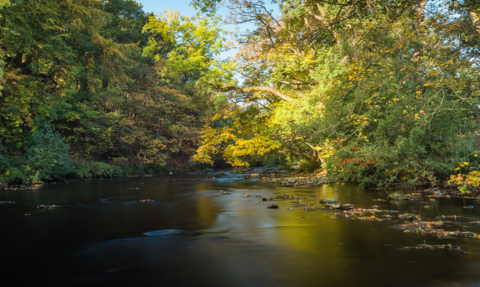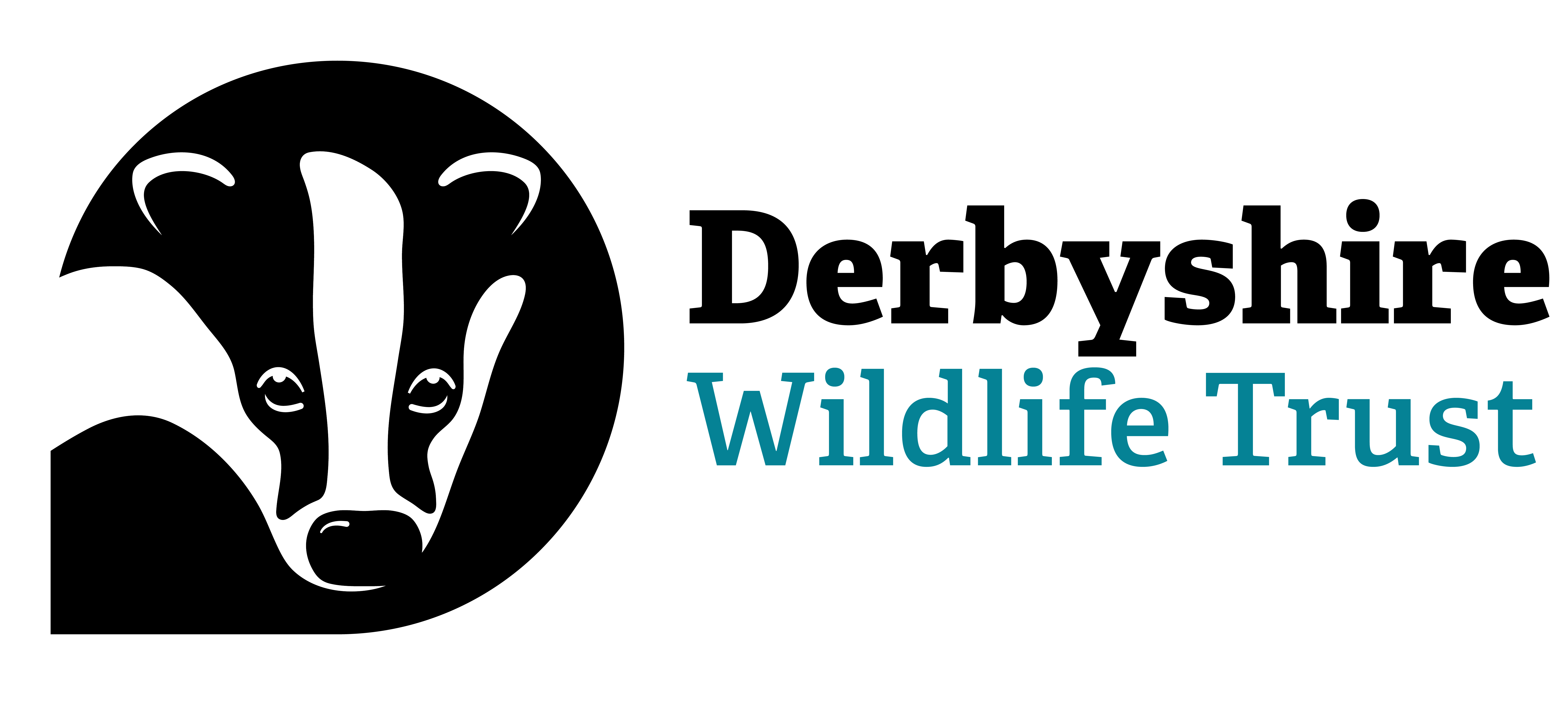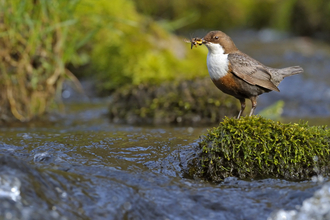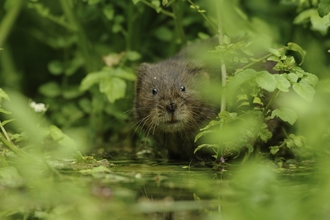
Rivers
Look down on the Derwent Valley from Curbar Edge, skip across the stepping stones of Dove Dale, or walk by the banks of the Trent and you can see how our relationship with place is influenced by rivers.
But look under the surface, and all is not well. Derbyshire is no exception from the pollution, over-abstraction, modifications, invasive species, and government underfunding that is affecting our rivers.
Rivers are an integral part of our landscape, the culture and landscape of Derbyshire has centred on waterways for centuries. Their protection and restoration is a priority for us here at Derbyshire Wildlife Trust, and we have a number of projects and programmes dedicated to species recovery, re-meandering, invasive species control and much more.
To save nature and ourselves we need to do things differently.
Our River Restoration Projects:
Derbyshire's Rivers:
Here in Derbyshire, we're fortunate to be surrounded by waterways that are not only home to a variety of iconic and diverse wildlife but also play a vital role in shaping the identity of our region. These watercourses bring joy and inspiration to the local communities, serving as a source of recreation, relaxation, and connection with nature. They breathe life into the landscape, enhancing the natural beauty of this landlocked part of the country and contributing to the unique character and charm that Derbyshire is known for.
Derwent
The catchment of the River Derwent covers an area of 1,194km2, covering much of Derbyshire and much of the Peak District National Park. The landscape surrounding the river is a real mosaic – comprised of heather-patched uplands, blanket bogs, peat, wet woodlands and meadows and iconic dry-stone walled pastures, enjoyed by visitors and locals alike.
The river's dark, peaty waters reflect the gritstone of the Dark Peaks, contrasting sharply with the White Peaks, known for their limestone landscapes and the clear spring water of Buxton. However, the Derwent faces growing environmental pressures, with climate change already impacting both human and wildlife communities. Collaborative efforts are underway to restore the river and its catchment, using nature-based solutions to adapt to these challenges.
Watch the video below to find out more:
Derbyshire's River Derwent, Now and Forever, Jack Perks
Dove
The Dove Catchment, considered the crown jewel of the Trent catchment, flows through the scenic Peak District, weaving through heather-covered uplands, broadleaf woodlands, and flower-rich grasslands. Despite being praised for centuries by anglers and nature lovers, the area's industrial history has left barriers that impact water flow and species migration.
Recent restoration efforts, including salmon reintroduction and weir removal, are helping to revive the river's natural conditions. These ongoing efforts highlight the importance of long-term commitment and collaboration to restore the Dove and protect its biodiversity.
You can often find dippers on the Dove’s babbling watercourses and under the surface white-clawed crayfish and trout.
Trent
Stretching from the urban centres of Nottingham, Birmingham, Derby, and Leicester to the wild moor scapes of Staffordshire, the rolling hills of Leicestershire, and the jagged peaks of Dovedale, the Trent catchment is a landscape of remarkable diversity, mirrored in its rivers.
In the north, the Dove and Derwent rivers wind through the UNESCO World Heritage sites of the Peak District, the brooks of Belper and the Erewash River traverse industrial landscapes, while the Eye and Mease rivers meander through vast expanses of agricultural land. Despite their differences, all these waters eventually converge with the mighty River Trent.
The Trent itself is a lifeline for the region, spanning 271 kilometres from its source near Stoke-on-Trent to its mouth at the Humber Estuary, where it meets the sea. This river is one of the UK’s most significant, playing a crucial role in sustaining agriculture, nourishing the communities along its banks, and supporting a vast array of natural habitats.
The Trent catchment not only helps feed the nation but also underpins a rich ecological network that requires both protection and efforts to restore and reconnect its diverse environments. The river’s journey is a testament to the intricate balance between nature, industry, and community, making the Trent a vital artery in the heart of England.
Click below to find out more about our work to transform the Trent Valley:
Erewash
The River Erewash and the surrounding floodplains, wetlands, and marshes form a rich tapestry for wildlife that is of value to not only Derbyshire but also Nottinghamshire. For a large proportion of its length, the river forms the boundary between the two counties, with important wildlife sites in both, whether that be Erewash Meadows in Derbyshire or Nottinghamshire’s Attenborough Nature Reserve.
The name “Erewash” is thought to derive from the Old English term meaning a “wandering, marshy river”, a reference to its once rich floodplains and meandering. Mining activities, agricultural intensification and urbanisation over a number of decades have since altered the nature and behaviour of the river. Various urban and industrial developments in the catchment have meant that many wildlife-rich areas are often isolated, while others are in ecological decline due to a lack of management. Large stretches of unmodified and naturalised river do remain intact, and surrounding areas of wetland and floodplain have been preserved due to the difficulty in draining the floodplain for farming.
Like many waterways the river Erewash and its banks form a valuable “blue corridor” for wildlife. They link many patches of nationally important habitat, allowing animals to migrate between them. Maintaining these wildlife highways is extremely important to allow unhindered access to breeding, foraging, and resting sites for many of our protected species. We are working hard to restore lost links along the river and help return it to its former wandering, marshy glory.
Restoring the river Ecclesbourne
We have been working with the Natural History Museum over the last few months to create a series of videos about rewilding.
We were delighted invite them to come and discuss our River Ecclesbourne restoration project and how we are improving the health of the river and how due to the removal of barriers, Atlantic salmon returned to spawn in the upper reaches of the river for the first time in over 100 years.
Take a closer look at what we are working with our partners to achieve in their episode of Field Studies:












